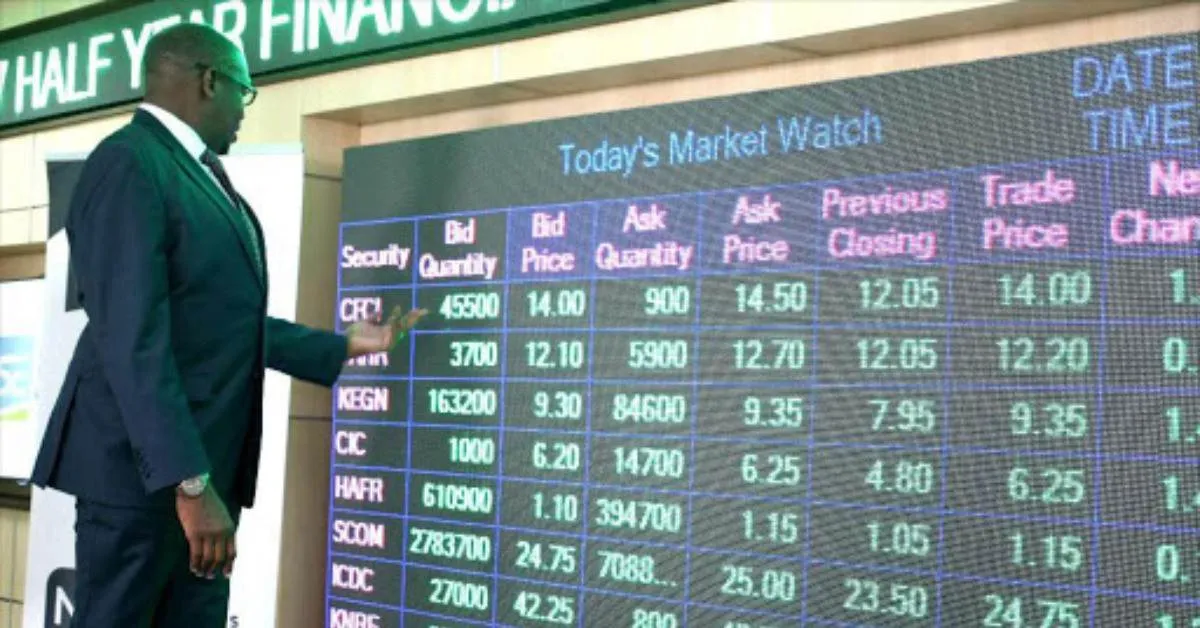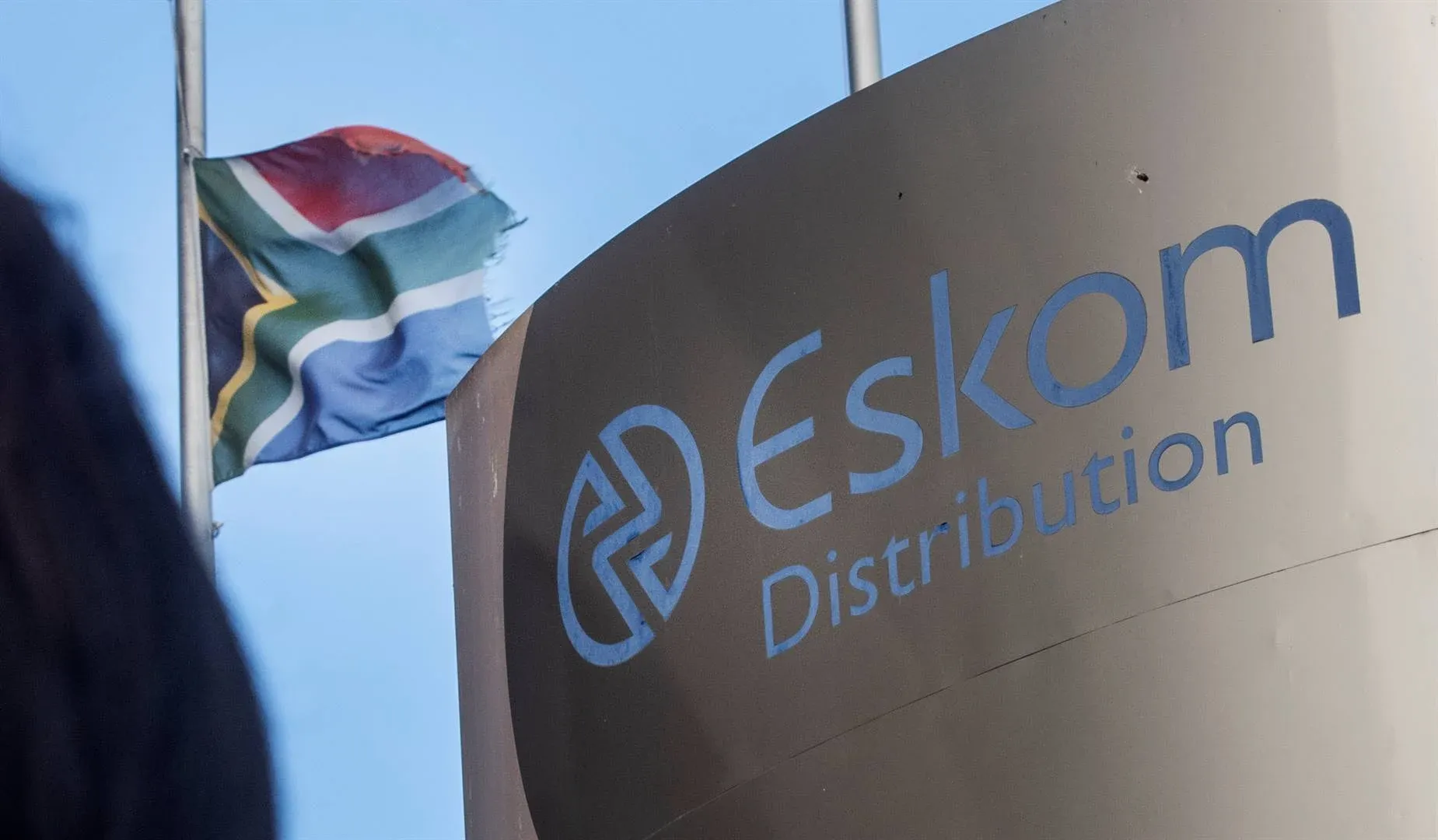The Nairobi Securities Exchange concluded the trading week of October 13, 2025, on a decidedly bearish note, with major market indices posting significant losses across the board. The comprehensive downturn reflects growing investor concerns about corporate earnings, sectoral challenges, and broader macroeconomic headwinds affecting East Africa’s largest economy.
Build the future you deserve. Get started with our top-tier Online courses: ACCA, HESI A2, ATI TEAS 7, HESI EXIT, NCLEX-RN, NCLEX-PN, and Financial Literacy. Let Serrari Ed guide your path to success. Enroll today.
Market Performance Overview
The week’s trading session witnessed a broad-based selloff that left no major index unscathed. The NSE All Share Index (NASI), which serves as the most comprehensive measure of market performance by tracking all listed companies, experienced the steepest decline, shedding 3.3% on a week-over-week basis. This represents one of the more significant weekly losses recorded in recent months and signals heightened caution among both retail and institutional investors.
The NSE 10 Index, which comprises the ten best-performing companies based on corporate governance standards, registered a more modest decline of 1.8% week-over-week. Meanwhile, the NSE 20 Share Index, tracking the top twenty companies by market capitalization, fell by 2.9% during the same period. The NSE 25, which includes twenty-five most active companies, mirrored the NSE 10’s performance with a 1.8% weekly decline.
These coordinated movements across multiple indices suggest that the market downturn was neither isolated to specific sectors nor driven by single-stock events, but rather reflected broader sentiment shifts among the investing community regarding Kenya’s economic trajectory and corporate profitability prospects.
Trading Activity and Market Liquidity
Total market turnover for the week reached USD 12.7 million, representing a significant contraction of 21.9% compared to the previous week’s trading volumes. This decline in market activity is particularly noteworthy as it suggests not only falling prices but also reduced investor participation and potentially decreasing market liquidity.
Lower trading volumes can create challenges for market efficiency, as reduced liquidity often leads to wider bid-ask spreads and increased price volatility. For institutional investors and fund managers, such conditions can make portfolio rebalancing more expensive and potentially impact performance metrics.
The pullback in trading activity may reflect several factors, including profit-taking after previous gains, seasonal patterns in market participation, or growing uncertainty about near-term corporate performance as companies continue releasing their financial results for the fiscal year ended June 2025.
Safaricom Dominates Trading But Faces Pressure
Safaricom PLC, Kenya’s telecommunications giant and perennial market heavyweight, once again dominated trading activity during the week, accounting for an impressive 31.6% of total market turnover. This concentration of trading in a single counter underscores Safaricom’s pivotal role in the Kenyan equity market and its status as the most liquid stock on the exchange.
However, despite commanding significant investor attention, Safaricom’s share price faced substantial pressure during the week, declining by 6.2% to close at KES 27.10. This represents a notable pullback for the telecommunications leader, which has traditionally served as a defensive holding in many Kenyan portfolios.
The selloff in Safaricom shares may be attributed to various factors, including broader market sentiment, concerns about competitive pressures in the telecommunications sector, regulatory developments, or profit-taking by investors who had accumulated positions at lower levels. As Kenya’s most widely held stock, Safaricom’s performance often serves as a barometer for overall market sentiment and retail investor confidence.
The company’s extensive business operations span mobile telephony, mobile money services through M-PESA, fiber optic internet provision, and various digital services. Any concerns about growth prospects in these key business lines can significantly impact investor sentiment and the stock’s valuation.
Power Sector Faces Severe Headwinds
The energy and power sector emerged as the week’s worst-performing segment, with both Kenya Power and KenGen experiencing sharp declines that significantly exceeded the broader market’s losses.
Kenya Power’s Challenging Week
Kenya Power and Lighting Company (KPLC), the country’s primary electricity distributor, saw its share price plummet by 13.5% week-over-week to close at KES 13.40, making it the week’s worst-performing stock among major movers. This dramatic decline came as the company released its financial results for the fiscal year ended June 30, 2025.
The financial statements revealed that Kenya Power’s profit after tax (PAT) contracted by 18.7% year-over-year to KES 24.5 billion. This significant earnings decline likely contributed to the negative market reaction, as investors reassessed the company’s profitability trajectory and growth prospects.
Despite the challenging financial performance, Kenya Power’s Board of Directors demonstrated confidence in the company’s financial position by recommending a final dividend of KES 0.20 per share to shareholders. The book closure date for this dividend distribution has been scheduled for December 2, 2025, meaning shareholders must be registered by this date to qualify for the payout.
The dividend recommendation, while modest, signals management’s commitment to returning value to shareholders even amid profitability challenges. However, the market’s negative reaction suggests that investors may be more concerned about the underlying business trends than the dividend payment itself.
Kenya Power’s challenges reflect broader issues facing the country’s power sector, including high transmission and distribution losses, system inefficiencies, debt burden, and the ongoing transition to renewable energy sources. The company has been implementing various reforms and efficiency improvements, but the latest results suggest that these efforts are still in progress with mixed results.
KenGen Also Under Pressure
Kenya Electricity Generating Company (KenGen), the nation’s largest power producer, also faced significant selling pressure during the week. The company’s shares declined by 7.2% to close at KES 9.28, adding to the sector’s woes.
As Kenya’s primary electricity generator, KenGen operates a diverse portfolio of power plants including geothermal, hydroelectric, wind, and thermal facilities. The company has been at the forefront of Kenya’s renewable energy drive, particularly in geothermal power development, where the country has emerged as a regional and continental leader.
The selloff in KenGen shares may reflect concerns about power purchase agreement terms, capacity utilization rates, project financing challenges, or broader uncertainty about electricity demand growth amid economic headwinds. The correlation between Kenya Power and KenGen’s performances suggests that investors view the sector holistically, with challenges at the distribution level potentially impacting generation economics as well.
Banking Sector Shows Mixed Performance
The banking sector, which typically accounts for a significant portion of the Nairobi Securities Exchange’s market capitalization, displayed mixed performance during the week with varied results among major players.
KCB Group Edges Lower
KCB Group, one of Kenya’s largest banks by assets and market capitalization, saw its share price weaken marginally by 0.9% week-over-week to close at KES 56.50. While this decline was relatively modest compared to the broader market’s losses, it nonetheless indicates that Kenya’s banking sector is not immune to the prevailing negative sentiment.
Interestingly, despite the slight price decline, KCB Group attracted significant attention from foreign investors during the week, leading the buying charge among foreign participants. This suggests that international investors may view the slight pullback as a buying opportunity, potentially signaling confidence in the bank’s long-term fundamentals despite near-term price weakness.
KCB Group has been expanding its regional footprint across East Africa and has been involved in various strategic initiatives including digital banking transformation, product innovation, and customer base expansion. The bank’s ability to maintain relatively stable pricing amid broader market turbulence may reflect investor confidence in its diversified business model and management quality.
One decision can change your entire career. Take that step with our Online courses in ACCA, HESI A2, ATI TEAS 7, HESI EXIT, NCLEX-RN, NCLEX-PN, and Financial Literacy. Join Serrari Ed and start building your brighter future today.
Consumer Goods and Beverages Provide Bright Spot
While most sectors faced headwinds, the consumer goods segment provided one of the few bright spots in an otherwise challenging week for equities.
East African Breweries Limited (EABL), the region’s leading alcoholic beverages manufacturer and a subsidiary of global drinks giant Diageo, bucked the broader market trend by advancing 1.9% week-over-week to close at KES 217.00. This positive performance earned EABL recognition as the week’s best-performing mover among major stocks.
EABL’s resilience amid broader market weakness may reflect the defensive characteristics of the consumer staples sector, where demand for products tends to remain relatively stable regardless of economic conditions. Additionally, the company’s strong brand portfolio, distribution network, and consistent dividend payments make it an attractive holding for income-focused investors seeking stability.
The alcoholic beverages sector in Kenya has shown remarkable resilience over the years, supported by growing middle-class consumption, urbanization trends, and favorable demographic patterns. EABL’s ability to post gains while the broader market retreated suggests that investors continue to value quality companies with predictable cash flows and proven business models.
Small and Mid-Cap Stocks Show Volatility
Beyond the large-cap stocks that dominate headlines and trading volumes, the small and mid-cap segment of the market also displayed significant volatility during the week.
Car and General, a diversified company involved in automotive, engineering, and agricultural equipment distribution, emerged as the week’s top gainer with an impressive 13.7% surge week-over-week, closing at KES 51.75. This dramatic advance demonstrates that opportunities for significant gains exist even during periods of broader market weakness, particularly in less liquid stocks where large trades can significantly move prices.
The company’s diverse business model, which includes vehicle distribution, construction equipment, and agricultural machinery, positions it to benefit from Kenya’s infrastructure development initiatives and agricultural modernization efforts. Strong performance from such smaller companies can sometimes signal emerging trends or sector-specific developments that haven’t yet been fully reflected in larger benchmark indices.
Foreign Investor Sentiment Turns Negative
A particularly concerning development during the week was the shift in foreign investor sentiment from positive to negative. International investors, who often provide crucial liquidity and longer-term capital to emerging markets like Kenya, recorded net outflows of USD 679,400 during the period.
This marks a reversal from previous weeks and suggests that foreign participants are growing more cautious about Kenya’s equity market prospects. Foreign investor sentiment can serve as an important leading indicator for market performance, as international fund managers typically conduct extensive research and may identify emerging risks or opportunities before they become widely recognized.
The breakdown of foreign investor activity reveals interesting patterns. KCB Group led the buying charge among foreign investors, suggesting that international participants see value in Kenya’s banking sector despite near-term challenges. Conversely, the ABSA New Gold ETF led foreign selling activity, potentially indicating profit-taking in the commodities-linked investment vehicle or a broader de-risking from emerging market assets.
Overall foreign investor participation rose to 38.5% of total market activity from 35.7% in the previous week. This increase in participation rate, despite net outflows, suggests that foreign investors were active on both the buy and sell sides, rather than simply withdrawing from the market entirely. This nuanced picture indicates that while some foreign capital is exiting, other international investors continue to see selective opportunities in Kenyan equities.
Looking Ahead: Key Events on the Horizon
Several important corporate actions and regulatory events are scheduled for the coming week that could influence market dynamics and investor positioning.
Corporate Actions
Two tea companies listed on the Nairobi Securities Exchange have scheduled significant corporate actions. Kapchorua Tea Company and Williamson Tea Kenya have both announced 1:1 bonus share issues, with the book closure date set for October 13, 2025. These bonus issues, which award shareholders one additional share for every share held, will be distributed during October and November 2025.
Bonus issues are typically viewed positively by investors as they increase share liquidity without diluting ownership percentages. While they don’t directly create value (as the market capitalization is spread across more shares), bonus issues often generate positive sentiment and can improve trading activity in the affected stocks.
Regulatory Review
The Energy and Petroleum Regulatory Authority (EPRA) is scheduled to conduct its monthly petroleum pump price review on October 14, 2025. This regular review determines the maximum retail prices for petrol, diesel, and kerosene throughout Kenya for the following month.
Fuel price movements have significant implications for the broader economy, affecting transportation costs, agricultural input prices, manufacturing expenses, and consumer purchasing power. Any substantial changes in fuel prices could influence investor sentiment toward various sectors, particularly transportation, manufacturing, and consumer goods companies whose cost structures are sensitive to energy prices.
Broader Economic Context
The performance of Kenya’s equity market during this week must be understood within the broader context of the country’s economic environment. Kenya has been navigating various macroeconomic challenges including inflation management, currency stability concerns, debt sustainability questions, and efforts to maintain fiscal discipline while supporting economic growth.
The Central Bank of Kenya has been balancing the dual mandate of maintaining price stability while supporting economic activity through appropriate monetary policy. Interest rate decisions, liquidity management, and currency interventions all influence the attractiveness of equities relative to fixed-income alternatives and impact corporate profitability through their effects on borrowing costs.
Additionally, Kenya’s position as East Africa’s financial hub means that regional developments, global commodity price movements, and international capital flow patterns all play important roles in determining market direction. The interconnected nature of modern financial markets means that events far from Nairobi can nonetheless impact the valuation of Kenyan equities.
Investment Implications and Outlook
For investors navigating the current market environment, several key themes emerge from this week’s trading activity. First, the broad-based nature of the decline across multiple indices suggests that sector rotation or stock-specific approaches may offer limited protection during periods of generalized risk aversion.
Second, the divergence between foreign and domestic investor behavior merits close attention. If foreign outflows persist or accelerate, they could create additional downward pressure on prices and reduce market liquidity, even if domestic investors maintain their positions.
Third, the significant decline in trading volumes alongside falling prices indicates that many investors may be choosing to sit on the sidelines rather than actively repositioning portfolios. This wait-and-see approach is common during periods of uncertainty but can create opportunities for patient, long-term investors willing to look beyond near-term volatility.
Finally, the contrast between the power sector’s struggles and the consumer goods sector’s resilience highlights the importance of sector selection and company-specific fundamentals in navigating challenging market environments. Quality companies with strong competitive positions, consistent cash flows, and competent management teams tend to demonstrate relative resilience during market downturns.
Conclusion
The week ending October 13, 2025, proved challenging for Kenyan equity investors, with major indices posting significant declines and trading activity softening notably. The combination of weak corporate earnings from Kenya Power, heavy selling in the telecommunications and power sectors, and negative foreign investor sentiment created a difficult environment for equity valuations.
However, pockets of strength in consumer goods stocks and selective opportunities in small and mid-cap names demonstrate that attractive investments can still be found even during broader market weakness. As always, successful investing requires careful analysis of company fundamentals, attention to valuation metrics, and appropriate portfolio diversification to manage risk while capturing potential upside.
Looking ahead, investors will be closely monitoring upcoming corporate earnings releases, regulatory decisions such as the EPRA fuel price review, and broader macroeconomic indicators to assess whether this week’s decline represents a temporary correction or the beginning of a more sustained downturn. The market’s response to these developments will provide important signals about investor confidence and the likely direction of Kenyan equities in the weeks and months ahead.
Ready to take your career to the next level? Join our Online courses: ACCA, HESI A2, ATI TEAS 7 , HESI EXIT , NCLEX – RN and NCLEX – PN, Financial Literacy!🌟 Dive into a world of opportunities and empower yourself for success. Explore more at Serrari Ed and start your exciting journey today! ✨
Track GDP, Inflation and Central Bank rates for top African markets with Serrari’s comparator tool.
See today’s Treasury bonds and Money market funds movement across financial service providers in Kenya, using Serrari’s comparator tools.
Photo source: Google
By: Montel Kamau
Serrari Financial Analyst
16th October, 2025
Article, Financial and News Disclaimer
The Value of a Financial Advisor
While this article offers valuable insights, it is essential to recognize that personal finance can be highly complex and unique to each individual. A financial advisor provides professional expertise and personalized guidance to help you make well-informed decisions tailored to your specific circumstances and goals.
Beyond offering knowledge, a financial advisor serves as a trusted partner to help you stay disciplined, avoid common pitfalls, and remain focused on your long-term objectives. Their perspective and experience can complement your own efforts, enhancing your financial well-being and ensuring a more confident approach to managing your finances.
Disclaimer: This article is for informational purposes only and does not constitute financial advice. Readers are encouraged to consult a licensed financial advisor to obtain guidance specific to their financial situation.
Article and News Disclaimer
The information provided on www.serrarigroup.com is for general informational purposes only. While we strive to keep the information up to date and accurate, we make no representations or warranties of any kind, express or implied, about the completeness, accuracy, reliability, suitability, or availability with respect to the website or the information, products, services, or related graphics contained on the website for any purpose. Any reliance you place on such information is therefore strictly at your own risk.
www.serrarigroup.com is not responsible for any errors or omissions, or for the results obtained from the use of this information. All information on the website is provided on an as-is basis, with no guarantee of completeness, accuracy, timeliness, or of the results obtained from the use of this information, and without warranty of any kind, express or implied, including but not limited to warranties of performance, merchantability, and fitness for a particular purpose.
In no event will www.serrarigroup.com be liable to you or anyone else for any decision made or action taken in reliance on the information provided on the website or for any consequential, special, or similar damages, even if advised of the possibility of such damages.
The articles, news, and information presented on www.serrarigroup.com reflect the opinions of the respective authors and contributors and do not necessarily represent the views of the website or its management. Any views or opinions expressed are solely those of the individual authors and do not represent the website's views or opinions as a whole.
The content on www.serrarigroup.com may include links to external websites, which are provided for convenience and informational purposes only. We have no control over the nature, content, and availability of those sites. The inclusion of any links does not necessarily imply a recommendation or endorsement of the views expressed within them.
Every effort is made to keep the website up and running smoothly. However, www.serrarigroup.com takes no responsibility for, and will not be liable for, the website being temporarily unavailable due to technical issues beyond our control.
Please note that laws, regulations, and information can change rapidly, and we advise you to conduct further research and seek professional advice when necessary.
By using www.serrarigroup.com, you agree to this disclaimer and its terms. If you do not agree with this disclaimer, please do not use the website.
www.serrarigroup.com, reserves the right to update, modify, or remove any part of this disclaimer without prior notice. It is your responsibility to review this disclaimer periodically for changes.
Serrari Group 2025












